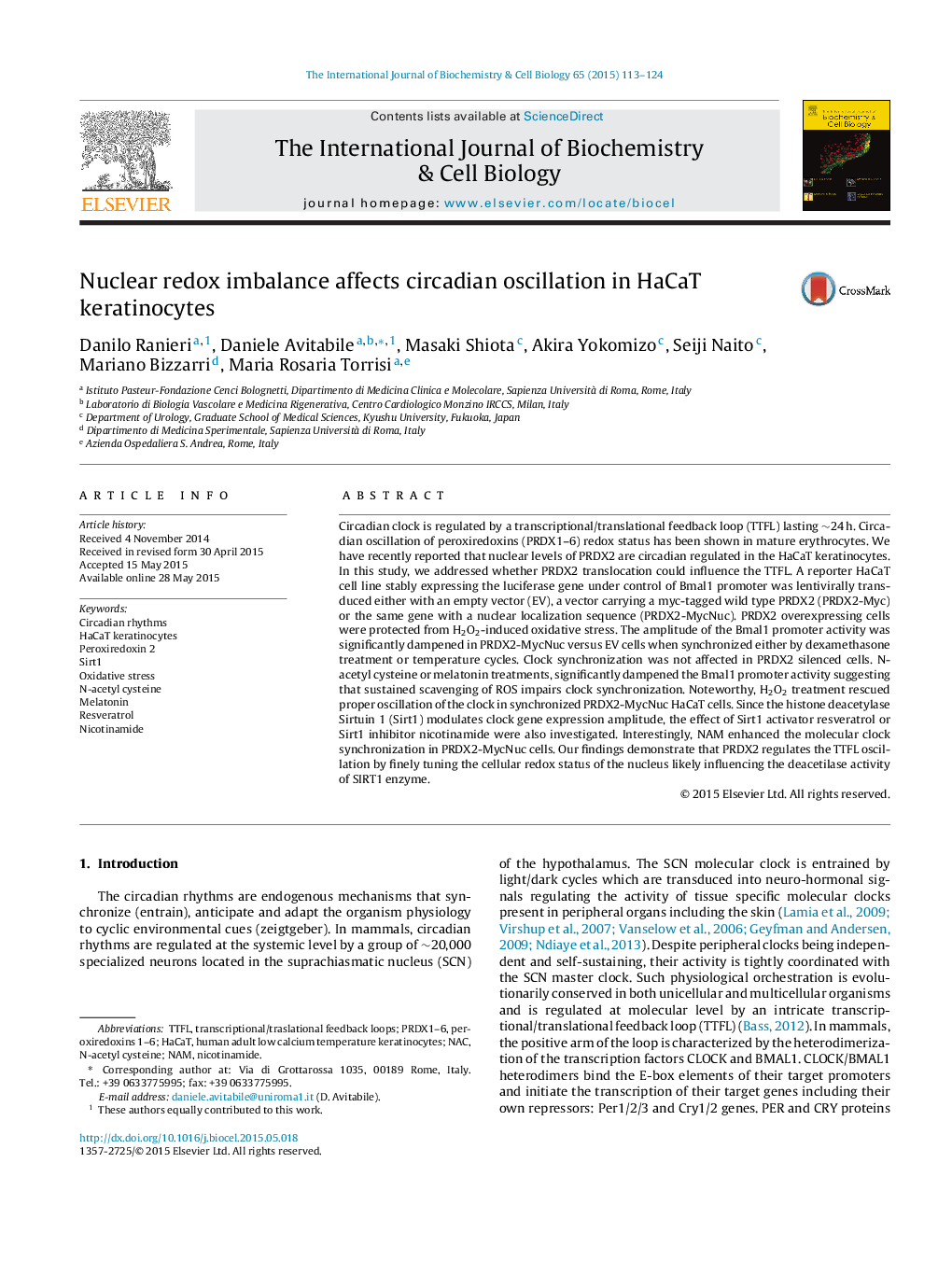| Article ID | Journal | Published Year | Pages | File Type |
|---|---|---|---|---|
| 1983478 | The International Journal of Biochemistry & Cell Biology | 2015 | 12 Pages |
Abstract
Circadian clock is regulated by a transcriptional/translational feedback loop (TTFL) lasting â¼24Â h. Circadian oscillation of peroxiredoxins (PRDX1-6) redox status has been shown in mature erythrocytes. We have recently reported that nuclear levels of PRDX2 are circadian regulated in the HaCaT keratinocytes. In this study, we addressed whether PRDX2 translocation could influence the TTFL. A reporter HaCaT cell line stably expressing the luciferase gene under control of Bmal1 promoter was lentivirally transduced either with an empty vector (EV), a vector carrying a myc-tagged wild type PRDX2 (PRDX2-Myc) or the same gene with a nuclear localization sequence (PRDX2-MycNuc). PRDX2 overexpressing cells were protected from H2O2-induced oxidative stress. The amplitude of the Bmal1 promoter activity was significantly dampened in PRDX2-MycNuc versus EV cells when synchronized either by dexamethasone treatment or temperature cycles. Clock synchronization was not affected in PRDX2 silenced cells. N-acetyl cysteine or melatonin treatments, significantly dampened the Bmal1 promoter activity suggesting that sustained scavenging of ROS impairs clock synchronization. Noteworthy, H2O2 treatment rescued proper oscillation of the clock in synchronized PRDX2-MycNuc HaCaT cells. Since the histone deacetylase Sirtuin 1 (Sirt1) modulates clock gene expression amplitude, the effect of Sirt1 activator resveratrol or Sirt1 inhibitor nicotinamide were also investigated. Interestingly, NAM enhanced the molecular clock synchronization in PRDX2-MycNuc cells. Our findings demonstrate that PRDX2 regulates the TTFL oscillation by finely tuning the cellular redox status of the nucleus likely influencing the deacetilase activity of SIRT1 enzyme.
Related Topics
Life Sciences
Biochemistry, Genetics and Molecular Biology
Biochemistry
Authors
Danilo Ranieri, Daniele Avitabile, Masaki Shiota, Akira Yokomizo, Seiji Naito, Mariano Bizzarri, Maria Rosaria Torrisi,
